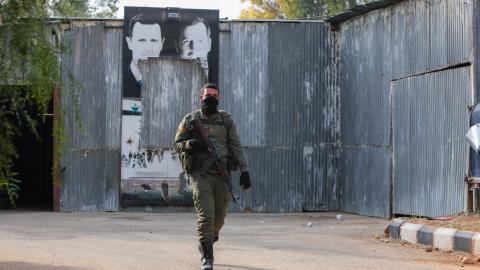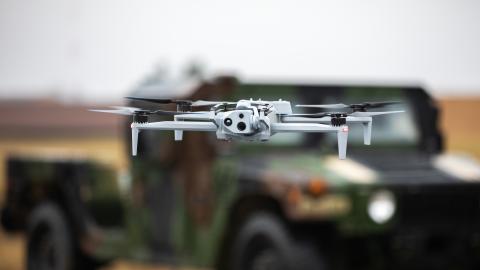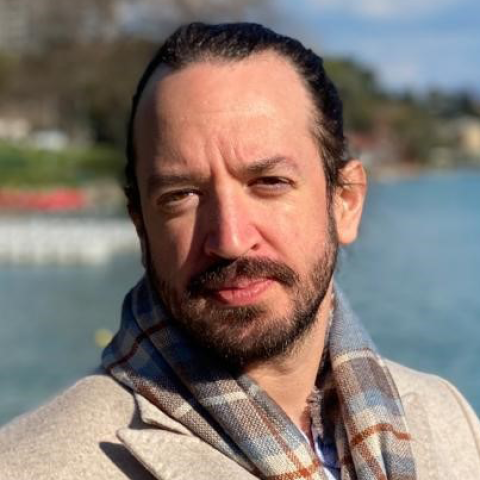The holy month of Ramadan is generally one in which the Islamic State (IS) network and other Salafi-jihadist groups ramp up operations in order to signal to their supporters and detractors alike that their jihad is alive and well. This year’s campaign was all the more important for the IS in light of the group’s recent losses, namely the killing of its caliph, Abu Ibrahim al-Hashimi al-Qurashi, by US forces in Syria in February 2022 and that of the IS spokesman around the same time. Consequently, the IS’s Ramadan campaign (which actually only kicked off on April 17, halfway through the holy month) was aptly dubbed “ Revenge Raid for the Two Sheikhs ” and framed as a retaliatory campaign. This campaign was conducted not only by the “core” IS in Iraq and Syria, which, despite no longer possessing a territorial caliphate after the fall of Baghuz in March 2019, remains operational as an insurgent/terrorist movement; IS affiliates or wilayat (“provinces”) around the globe were expected to increase their operational tempo under the banner of the Revenge Raid campaign. Most acted accordingly, as witnessed by a spike in total IS operations across wilayat in the last two weeks of April.
Unsurprisingly, the IS’s affiliate based in northeastern Nigeria, the Islamic State West Africa Province (ISWAP), did some heavy lifting during this campaign. The group has been a star IS affiliate for several years, consistently claiming some of the highest numbers of attacks and enemy casualties of any IS province while being profiled frequently and prominently in the Islamic State’s global weekly newsletter, al-Naba’, and other IS media organs. This Ramadan was no different: ISWAP was second only to the “core” IS forces in Iraq and Syria1 in terms of operations claimed during the Revenge Raid campaign, as data from the OSINT platform Extrac shows. During the campaign, 146 attacks were reported from Iraq and Syria, while ISWAP claimed 58 attacks, mostly in Nigeria, followed in magnitude by the 31 attacks claimed by the IS affiliate in Afghanistan (see graphics below). This means that more than 80 percent of all attacks claimed during this year’s much-trumpeted Ramadan campaign were the work of either the core IS group or its Nigerian affiliate.

**Figure 1: Number of attacks claimed by ISWAP per day in 2022. Notice the surge in mid-April with the start of the global IS Ramadan campaign. (Source: Extrac)**

**Figure 2: Number of attacks claimed by each IS affiliate during the global Ramadan campaign, April 17 to May 1, 2022. (Source: Extrac)**
More notably, not only did ISWAP dramatically increase its tempo of attacks for the Revenge Raid campaign, but it was also nearly alone among IS affiliates in conducting operations in new areas. In this case, ISWAP conducted attacks for the first time in the states of Taraba, Kogi, and Niger (not to be confused with the country of Niger), thereby announcing a presence in central and, to some extent, southern Nigeria (Kogi officially being considered a central state though located quite far south). If one is to judge IS by its post-Baghuz motto—baqiyya wa tatamaddad or “remaining and expanding”—then ISWAP was of exceptional service to the IS this Ramadan.
At the same time, a closer examination of ISWAP’s participation in the Ramadan campaign underscores one of the paradoxes of the group: While it is arguably one of the most important IS franchises operating today from the perspective of the IS core and global ecosystem of IS supporters, it is struggling to attract the same degree of attention and notoriety within Nigeria that its predecessor, Boko Haram, did in the early 2010s. The reasons for this are themselves cause for concern, however: insecurity of all types is worse in Nigeria today than a decade ago, and ISWAP’s grueling insurgency has consequently faded from the headlines as new militant actors have emerged or grown in strength.
While Boko Haram conducted terror attacks across northern Nigeria in the early 2010s and was arguably the most notorious militant group in West Africa at the time, by 2016, when the movement split into two factions, it was largely confined to waging a rural insurgency in its home state of Borno in far northeastern Nigeria as well as in parts of neighboring Cameroon, Chad and Niger, i.e., the Lake Chad Basin. One of those two factions, ISWAP, has been waging an effective guerrilla campaign, attriting Nigerian forces in the northeast while intermittently terrorizing local Christian populations (unlike the original Boko Haram, the group tends to refrain from massacring Muslim civilians and prefers to try to win their support, though there are notable exceptions to this trend).
ISWAP’s brutal violence has largely failed to make an impact on the public consciousness in recent years as Boko Haram once did, however.BkMkToFoot2" href="#footNote2"><sup>2</sup></a> Most of the Nigerian public has grown fatigued of repeated reports of war in the northeast as "insecurity has deteriorated across the remainder of Nigeria’s six geopolitical zones and daily economic hardships have mounted. Meanwhile, many in the political and security elite, ensconced in the national capital of Abuja or in other relatively secured metropolitan centers, seem willing to consign the northeastern countryside to “forever war” status so long as their own interests are not threatened – and indeed, some elites have grown quite rich from the conflict. It is not uncommon to hear people in the rest of Nigeria speak of Borno as if it were a distant country, perhaps reelecting the fact that the state is culturally and ethnically quite distinct from the remainder of Nigeria (though, in fairness, there is hardly a region of Nigeria for which that is not the case). This perception is also present among soldiers in the northeastern theatre, many of whom have historically struggled with low morale. Among the many soldiers I interacted with during a month spent in Borno last year, I often think back to one group of enlisted men from the south who mentioned one night how excited they were to soon be “returning to Nigeria” for leave.
ISWAP seems to be aware of this shortcoming—i.e., of popular perceptions that it is a “peripheral” threat confined to the remote northeast—and has sought to employ the global Ramadan campaign to correct this narrative. Indeed, there is added impetus for ISWAP to expand this year since, to the Nigerian military’s credit, this iteration of the annual dry season offensive has brought what appear to be the most significant territorial gains against jihadists in Borno since 2015–16 (one hopes the Nigerian government, including non-military actors, will capitalize on these gains more proactively than they did during those years, but there is good reason to be skeptical). Thus, both “global” and “local” considerations pushed ISWAP to act aggressively during this year’s Ramadan: ISWAP needed to do its part to bolster the image of the IS as a global movement following the loss of the caliph in February; it also needed to signal to its local and/or regional supporters and rank-and-file members that the group is not only withstanding intensified military pressure but also breaking out of its long-established operational routines.
To this end, ISWAP conducted operations in Taraba and Kogi in the first days of the Revenge Raid campaign. The former included bombings of bars in two cities, the first of which killed six people and injured nineteen others. In Kogi, the group raided a police station in a small town on April 23, killing, per the group’s own account, five police officers and recovering weapons. This Kogi attack was highlighted at length in an article published by A’maq, one of the central IS media outlets, that included a photo of the recovered weapons and stressed that this was the first operation to be conducted by jihadists so far south within Nigeria. The modus operandi of the incident closely resembles that of the early Boko Haram insurgency: an assault by a small team of gunmen on a police station (typically a far softer target than a military base), during which rifles are recovered. After conducting such raids for many months in 2010-2011, Boko Haram accrued sufficient firepower and confidence to move on to harder targets, such as military outposts, before eventually overrunning entire towns. This is not to say that ISWAP will experience a similar trajectory in Kogi, but simply that ISWAP’s cell in the state may be following a familiar playbook.

**Figure 3: The geographic distribution of ISWAP attacks in Nigeria between April 17 (the start of the Ramadan campaign) and June 2, 2022. The three clusters of attacks across the central belt of Nigeria (Taraba in the east, Suleja just outside of Abuja in the center, and Kogi state to the southwest of Abuja) represent new areas of operations for ISWAP (Source: Extrac).**
The Ramadan operations were not one-off. The group has claimed two additional attacks in Taraba and three in Kogi since May 1—the end of Ramadan and, by extension, the campaign. These include a bomb attack near a military barracks in the Taraba state capital, thankfully with no casualties, and several small bombings in Kabba, a larger town located some 30 kilometers from the police outpost that ISWAP raided in April. Additionally, the group claimed an assault on a police station in Suleja, Niger state, that occurred on May 12, marking its first operations in this north-central state that neighbors Abuja.
ISWAP’s expansion into central Nigeria does not appear to be superficial—the group has released several bits of photo evidence and most of the attacks it has claimed correspond to incidents that were independently reported by local media. A measured assessment of the group’s expansion would suggest that this ongoing campaign is a cause for concern, but that ISWAP should not be treated as the sole or even necessarily the primary security challenge in these new regions in which it is operating.
On the one hand, each of ISWAP’s external attacks is concerning in its own way. The attack in Suleja, just on the outskirts of Abuja, brings the threat of terrorism closer to the capital than it has been in a decade. The attacks in Kogi mark the southernmost reach of jihadists in Nigeria since the beginning of the Boko Haram conflict in 2009.3
Kogi has historically avoided the worst of the ethnoreligious turbulence that has rocked other states in north-central Nigeria, but political contests in the last twenty years have increased intercommunal tensions and created a fragile situation that an earlier generation of jihadists sought to exploit in the early 2010s.4
Interestingly, a Ramadan photo report released by the central IS media office on April 30 showed what appear to be the Taraba and Kogi cells for the first time; in the case of the latter, the photos show a handful of fighters dressed in Western clothing or attire typical of southern Nigeria that most Nigerians would not associate with devout Muslims or northeasterners, a notable difference from the standard attire of ISWAP’s fighters in the northeast. That insurgents would attempt to blend in with the local population is not surprising. But in ISWAP’s case, it is notable given that Boko Haram historically struggled to expand beyond the northeast, in part because the group’s fighters were unable to blend in with communities from which they did not themselves hail. The presence of a Kogi cell therefore suggests that ISWAP is learning how to adapt to different environments better than Boko Haram historically did.
Taraba is perhaps the area of most concern given the complex insecurity that already bedevils the state. Intercommunal tensions are high owing to a long-running and overlooked conflict between pastoralists and farming communities over land in the Mambilla Plateau, and certain bandit gangs from northwestern Nigeria have reportedly relocated to Taraba or established cells in the state in recent years. Last month, I conducted fieldwork in two states that neighbor Taraba and are grappling with their own complex conflicts (Plateau and Benue). Officials and community leaders in each state expressed concern that Taraba was emerging as a source of instability that militants and criminals of various stripes would exploit as a base of operations to wreak havoc throughout the wider region.
Yet herein lies one of the major challenges ISWAP faces in terms of maximizing the impact of its operations: The primary risk that Nigeria faces today is not the possibility that jihadists will overrun the capital, as is the case in some countries, such as Somalia. Rather, the risk is that Nigeria is collapsing under the weight of manifold security challenges and crises: banditry, secessionist militias, tit-for-tat intercommunal violence, organized crime, cultism, and oil bunkering, to name but a few.5 ISWAP’s newfound presence in north-central Nigeria is concerning because it adds an additional source of violence, an unpredictable variable, to what is already a volatile region, not because ISWAP is likely to become the primary source of instability in a given state outside the northeast.
For now, ISWAP’s cells in north-central Nigeria appear quite small. The aforementioned Ramadan photo set of fighters in Taraba and Kogi did not show any photos featuring more than six fighters, and the attacks each cell has claimed are relatively unsophisticated. The fact that there was no attack in Niger state until after Ramadan could suggest that the cell there was unprepared to conduct attacks during the Revenge Raid campaign or was experiencing difficulty communicating with ISWAP leadership for these purposes. And while it was notable that ISWAP claimed operations in north-central Nigeria this Ramadan, it is just as notable that it did not claim attacks in certain areas. Many observers have long feared that ISWAP is poised to forge relations with the powerful bandits that have overrun swathes of northwestern Nigeria in recent years, yet the group has not claimed any attacks in these regions since announcing its expansion outside the northeast during Ramadan.BkMkToFoot6" href="#footNote6"><sup>6</sup></a> This suggests that ISWAP has not had much success in forging durable ties with bandits and has thus been largely boxed out of the northwest earlier this year).
Relatedly, the Ramadan attacks were not featured particularly prominently across the Nigeria media and political landscape. While the first Kogi attack was widely documented in IS media, Nigerian outlets mostly covered ISWAP's claim of responsibility in short write-ups. The attack in Niger state was briefly reported the morning after the incident, but since no ISWAP claim had been published at that time, it was simply attributed to “gunmen,” of whom there are no shortage in Niger state.
The bombings in Taraba and some subsequent attacks in Kogi received media attention but were nonetheless overshadowed by an explosion of unknown nature in Kano on May 17, which police quickly attributed to an accident involving a gas cylinder but which local residents claimed was the work of a suicide bomber. The mystery surrounding the explosion, including contradictory and rapidly changing narratives from authorities and no claim of responsibility from any group, and the location of the tragedy, a predominantly Christian neighborhood in northern Nigeria’s largest metropolis, made it ripe for speculation about a government coverup and for emotional commentary on social media about the status of Christians in the north. In this sense, suspected but unverified jihadist activity may garner more attention than attacks that are promptly claimed because the former may play more easily into the public’s fears or biases. There are also political dimensions at play: While the then-opposition APC party made the Boko Haram conflict central to the 2015 elections by criticizing the incumbent PDP administration’s handling of the insurgency, the roles today are switched. The incumbent APC government largely downplays the insurgency in the northeast or boasts of the weapons it has purchased for the military in that theater, while PDP candidates seem to mostly criticize the current administration for the insecurity that has emerged or grown in other regions of the country since 2015, such as in the northwest or southeast.
None of this is to chastise Nigerian media or to suggest that journalists should breathlessly give oxygen to any and all jihadist claims and treat ISWAP as the primary news item (which would raise its own professional and ethical issues). It is simply to note that while ISWAP’s operations are now geographically more dispersed than ever before, these external cells are small and operating in complex security environments such that their attacks might be overlooked or even be misattributed to other militants. Many Nigerians do not concern themselves with which particular group is behind a given attack, and for good reason.
As one former official in north-central Nigeria stated in an interview last month, “The insecurity has become too much. . . . bandits, Boko Haram, unknown gunmen, herdsmen—most of us see this as one problem, so we don’t care so much [about] who and who [is responsible], these labels. We are just asking the government to do something.”
Granted, we can only speculate what ISWAP and its partners in the core IS believe ISWAP is achieving with its attacks outside the northeast. Presumably ISWAP’s leadership, which is mostly Nigerian, has a sense of how the group’s operations are being covered and/or overlooked in local media and online, but perhaps the core IS leadership in Iraq and Syria is under the impression that Nigeria’s more than 200 million inhabitants live in daily fear and/or awe of ISWAP and that the Abuja will soon fall to the insurgents. Or, perhaps more likely, this does not concern IS leadership so much as maintaining a steady stream of propaganda and attack claims from West Africa does, as these claims help sustain the IS’s narrative that it is “remaining and expanding.”
In any case, if there is a risk that those who consume too much jihadist propaganda will overestimate ISWAP’s threat to Nigeria relative other militants, there is a risk that the rest of us might underestimate the group. I predicted last year that ISWAP would remain in a stalemated conflict in the northeast and would not be able to move or recruit sufficient manpower outside of that region to pose an existential threat to the Nigerian state. This still seems the most likely trajectory on the larger strategic level, but we must also consider what kinds of problems a proliferation of operational cells throughout different parts of the country could cause. Attacks in urban areas, and attacks against Christians in particular, will likely attract more attention than rural insurgency and have the potential to exacerbate wider social tensions, hence why the emerging trend (with clear historical precedents) of ISWAP bombing churches and bars in northern cities is cause for concern. It is worth remembering that the danger of extremist movements lies not only in the horrific violence that they can directly inflict on their victims, but also in the messages and sentiments that their violence can propagate, both directly and indirectly, especially in societies where tensions already run high.
Editor’s note: The original piece was amended in several places for clarity.

















